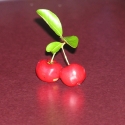Barbados Cherry
Malpighia glabra
Barbados Cherry is also known as "Acerola Cherry"
Barbados cherry is a tropical evergreen shrub bearing numerous bright red, sweet-tangy cherries. It is a native to the West Indies, Central and South America, and grows well in tropical and sub-tropical environments.
It was introduced into Florida in the late 1880's. By the 1950's, it gained considerable attention because of its extremely high vitamin C content. Barbados cherry quickly earned the nickname, "acerola cherry".
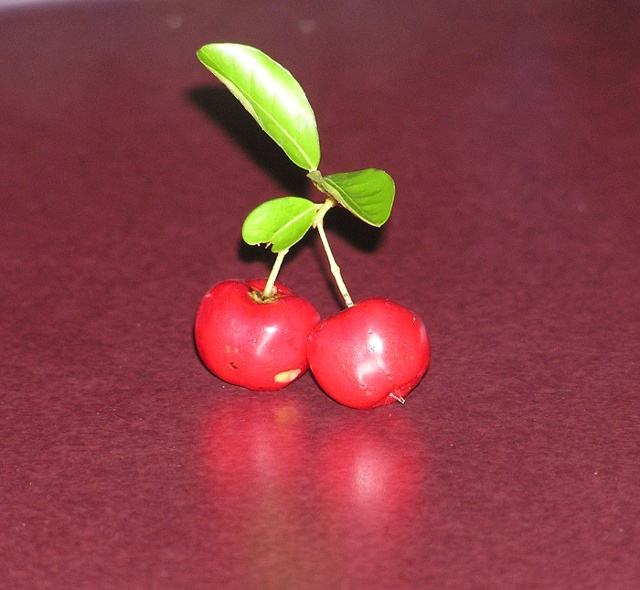
Barbados cherry can be more sweet than tart if grown with trace minerals
Growth
Plants are densely branched, evergreen, and can have either a low, spreading habit or an upright, open habit. If significantly pruned while young, it will form a central trunk and can be shaped into a small tree.
Mature plants will grow 10-12' tall and wide, and can be grown in containers as well. Sometimes the plant grows short, thorn-like stems from the branches -- so be cautious when reaching in to pick fruit.
Evergreen leaves are elongated and wavy, and vary in color from light to dark, shiny green.
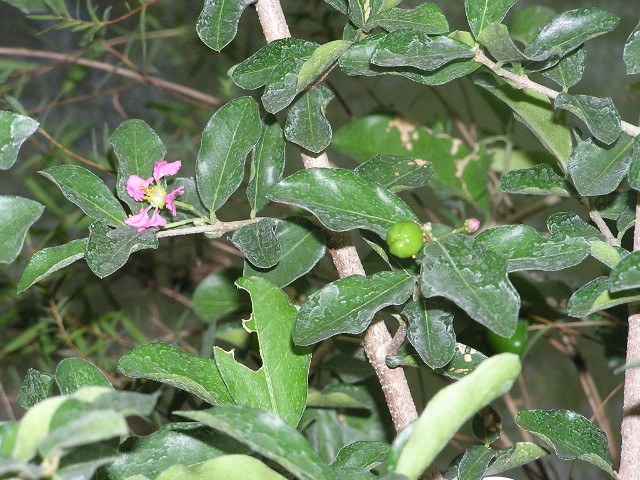
leaves close up

15g Barbados Cherry trimmed to a single trunk
Fruits & Flowers
Flowers are small, frilly and various shades of rosey-pink.
Barbados cherry produces traditional cherry-sized fruits, shaped much like a tiny apple. Delicious and sweet, the tangy flavored cherries are rich in Vitamin C. Cherries usually set either singly or in clusters of 2-3.
Fruit is thin-skinned, soft and juicy, and varies from bright red to deep crimson red when ripe. A well fed plant will produce larger cherries: approximately an inch in diameter.
Each cherry contains several seeds.
In sub-tropical climates, the Barbados cherry will fruit as much as 3-5 times a year, from May to November. In tropical areas where there is no frost, the plant is almost everbearing.
Scientists have found that the more acid the fruit is, the higher the vitamin C content. And partially ripe fruit is also higher in vitamin C than fully ripe fruit.
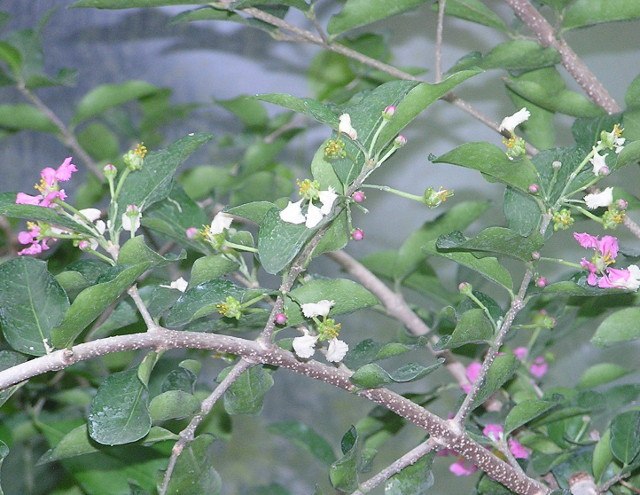
Barbados flowers profusely in the summer months

fruit is bright red when fully ripe
Planting
Barbados cherry will tolerate a wide variety of conditions, but prefer good rich soil with consistent water but good drainage. It can tolerate a little saturation but does not like really extended periods of standing water. Can be planted on a mound if standing water is a problem.
You'll get better growth & better fruit production with consistent water.
Barbados cherry is tender to freezes when young, but tolerates short spells down to about 28 degrees when mature.
It has a moderate tolerance for salt water.
Pruning is best done in the fall right after the last fruit is picked.
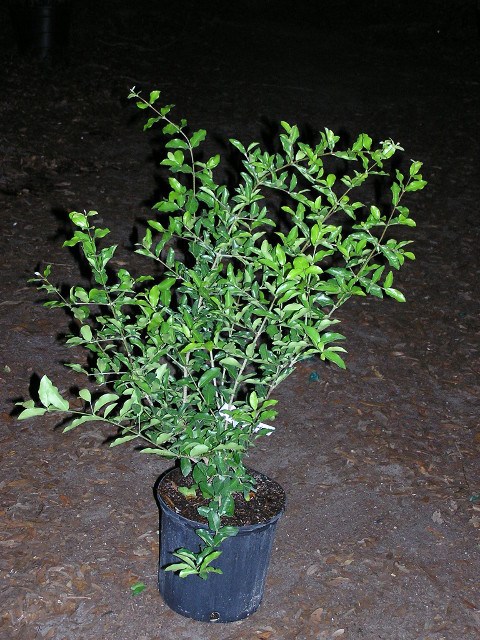
plump 3g

7g full and bushy

15g Barbados Cherry trimmed to a single trunk

